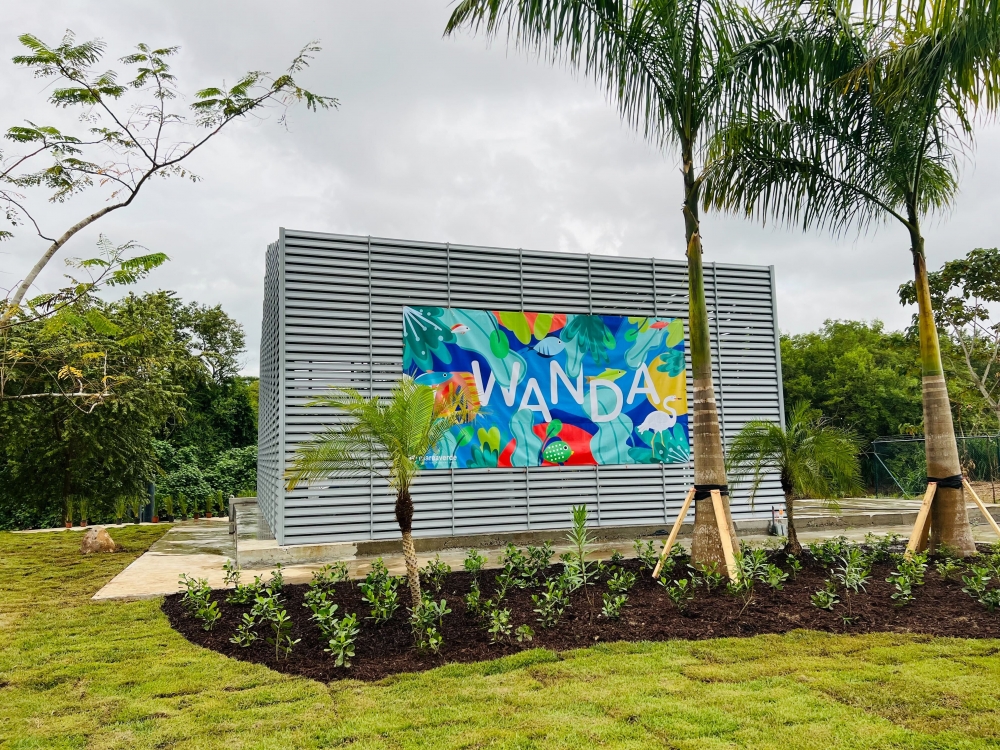Catching Plastic at Its Source
Along a dirty river, an ingenious garbage-swallowing machine and an inspired community are offering hope to a world overrun by plastic.
A semiautonomous trash interceptor powered by flowing water and sunlight today started eating plastic on the Juan Díaz River in Panama City, Panama, the most ambitious attempt yet to rescue a long-contaminated waterway from being a floating landfill. It’s also a significant step in a broader campaign to remove plastic from waterways in Latin America, Africa and Southeast Asia, and to analyze the extracted plastic with an eye toward addressing the pollution’s root cause.
The interceptor is a “trash wheel,” affectionately nicknamed Wanda Díaz, a project of the environmental group Marea Verde. One of eight members of the Clean Currents Coalition, Marea Verde is part of a worldwide effort to subdue the plague of ocean plastics, partly by capturing and removing plastics at their source: polluted rivers.
“There’s a living river under all that trash, or there could be,” said Douglas McCauley, director of UC Santa Barbara’s Benioff Ocean Science Laboratory, which advises the Clean Currents Coalition. “The waters of the Juan Díaz once nourished the local community, the nearby mangroves and the Pacific Ocean. We’ll never restore rivers like this to health unless we can start to get the plastic out — and keep it out. And rescuing rivers from plastic is the key to rescuing the oceans.”
Trash wheels are relatively new inventions. Using booms, conveyor belts and solar panels, they sweep plastic out of the water and repurpose, recycle or incinerate it. A similar machine, Mr. Trash Wheel, has been clearing tons of trash from Baltimore’s Inner Harbor since 2014.
Panama City’s Wanda Díaz is the latest of the Clean Currents Coalition’s plastic capture devices to launch. But that’s not all the coalition is doing. They’re also piloting other technologies, including simple, low-cost systems such as booms, barriers and traps, and more complicated trash concentrators and harvesters. The group is looking for what works best in different places, hoping to create a diverse array of options that can be replicated in other rivers and waterways around the world.
While the discussion about ending plastic pollution often focuses on the ocean, rivers are a critical piece of the puzzle. Rivers send up to 300 metric tons of plastic per hour into the ocean worldwide. Some scientists estimate that as much as 12.7 million metric tons of plastic have entered the ocean each year since 2015. Plastic waste is much harder to recover once it disperses in the ocean. Serving as a bottleneck for plastic on its way to the ocean, rivers provide a powerful opportunity to trace plastic back to its source.
“Technological solutions can be highly effective, but they are just the beginning,” said Molly Morse, senior manager at the Benioff Ocean Science Laboratory and director of the Clean Currents Coalition. “The coalition’s larger aim is to scale up — to use the collected data to change policies and infrastructure around the world, to galvanize society into finding ways to keep this nonbiodegradable pollution out of rivers and, ultimately, the ocean. This means engaging and educating local communities, investing in waste management infrastructure and repurposing removed plastic, and using data to influence policy and the private sector.”
“Devices like trash wheels are not magic bullets — they treat a symptom of the problem but are not themselves a cure,” added McCauley. “But they do, of course, remove tons of trash, while also giving communities a tangible, highly visible reminder about the problem of plastic waste. Beyond that, they generate data that can be used to spur changes in plastic production, use and policy.”
Worldwide, coalition projects have reached the following milestones:
· 1,808,526 lbs (820,334 kg) of plastic waste captured from rivers and diverted from the ocean
· 78,466 people engaged in local communities through 335 outreach and educational events
· 82% of captured plastic recycled or repurposed:
· 40% PET (soda and water bottles, shampoo bottles, etc.)
· 23% HDPE (toys, food containers, trash bins, etc.)
· 12% PP (containers, toys, car parts, etc.)
The Clean Currents Coalition members are located in Panama, Mexico, Jamaica, Ecuador, Kenya, Vietnam, Thailand and Indonesia. The coalition is both advised and funded by the Benioff Ocean Science Laboratory, formerly the Benioff Ocean Initiative, which recently announced an additional $60 million gift from the Benioff family. More information on the work and success of the Benioff Ocean Science Laboratory can be found here.





